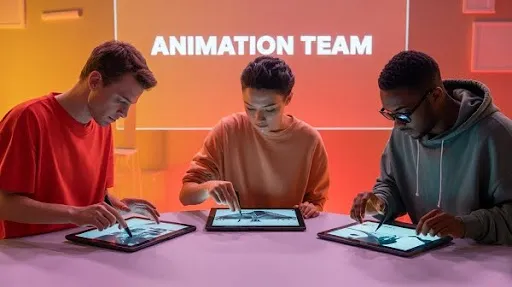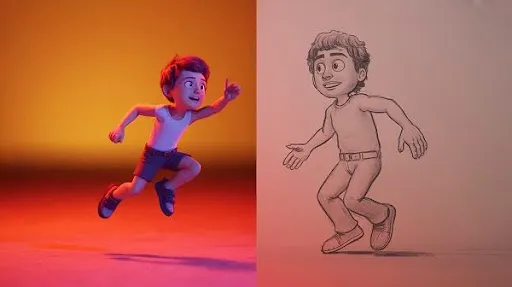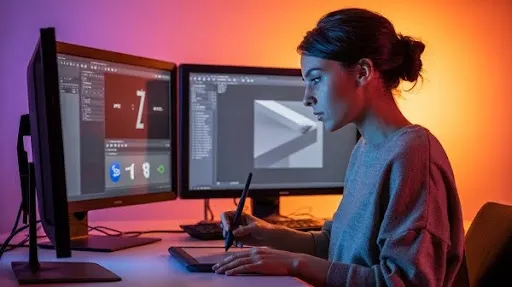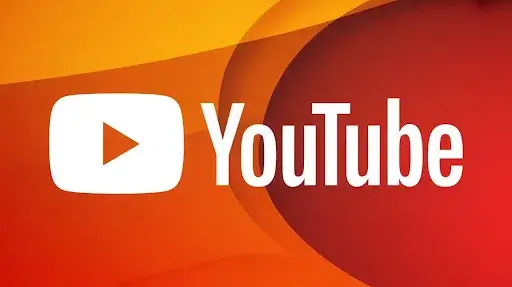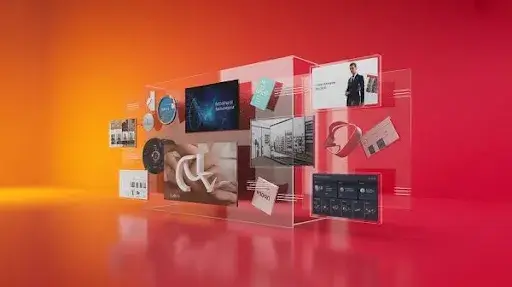Animation has quickly become a powerful tool for businesses in today’s digital era. Whether in marketing, education, or branding, animations bring ideas to life through motion. For example, in web design, animated objects and motion graphics not only make a site visually appealing but also guide visitors on how to navigate more effectively.
Thanks to advancements in computer graphics, creating animated videos is now faster, easier, and more cost-effective. This evolution has given rise to digital animation—a computer-generated form of animation that uses advanced techniques to design moving graphics and objects.
Unlike traditional methods, digital animation is created entirely on computers and can be produced in both 2D and 3D formats, making it versatile for businesses of all kinds.
Before we explore digital animation in detail, let’s first understand the main types of animation.
5 Types of Animation
1. Traditional Animation
Traditional animation, often called cel animation, is one of the earliest forms of the art. In this method, animators drew characters and objects frame by frame on transparent sheets of celluloid paper. When these frames were played in sequence, they created motion—much like a flipbook.
In its early days, animators worked at special light tables to ensure each new drawing aligned with the previous frame. While traditional animation has largely shifted to digital tools today, the principle remains the same. Although it is commonly 2D, not every 2D animation falls under this category.
2. 2D Animation
2D animation is the process of creating movement in a two-dimensional space. It remains widely used for:
- Cartoons and animated films
- Marketing and promotional videos
- Business presentations
- Educational content
- Advertisements
- Video games
Unlike traditional animation, 2D animation today can be created digitally using specialized software. This makes it faster, more affordable, and adaptable for businesses looking to convey information in a simple yet engaging format, which is why many companies are turning to professional 2D animation services.
3. 3D Animations
3D animation is a form of computer-generated animation that takes place in a three-dimensional digital space. Unlike traditional hand-drawn animation, every aspect of the process is built inside a digital environment, often using advanced tools like motion capture to replicate real human movement, props, and objects with lifelike precision.
This type of animation is widely used by companies to create engaging product demonstrations, advertisements, and storytelling experiences. By leveraging powerful computer graphics and rendering software, 3D animations deliver depth, realism, and immersion that make them one of the most impactful animation styles today.
4. Motion Graphics
Motion graphics are a type of digital animation that focuses on bringing text, shapes, and graphic elements to life through movement. Unlike character-driven animations, motion graphics are primarily used to convey ideas, information, or branding messages in an engaging way.
They are most commonly seen in electronic media, including commercials, explainer videos, social media content, and film opening sequences. Their clean, modern look makes them a favorite for businesses that want to showcase innovative ideas, highlight key information, or present data in a visually dynamic manner.
5. Stop Motion
Stop motion is a traditional yet powerful animation technique where physical objects are photographed frame by frame, with small movements made between each shot. When the sequence of images is played back quickly, it creates the illusion of movement.
Unlike 2D or 3D digital animation, stop motion relies on tangible objects such as clay models, puppets, or everyday items. This gives the animation a handcrafted, unique charm that stands out in a digital-heavy world. It has been used in classic films, commercials, and creative projects to achieve a distinctive, tactile storytelling effect.
Now that you’re familiar with these types of animation, you might be wondering—which of them falls under digital animation? The answer is simple: digital animation refers to any technique that relies entirely on computers and computer graphics. This includes 3D animations and motion graphics, among others. If a computer plays a central role in creating the animation, it can be classified as digital.
Want to see this in action? Let’s explore some examples of digital animation to understand its impact even better.
Example of Digital Animation
Take a look at some of the digital animation projects created by Prolific Studio below.
AIA Medishield Life Plan
This project shows how digital animation can be both engaging and informative. AIA trusted Prolific Studio to produce an explainer video for their Medishield Life Plan, and the result was simple, clear, and impactful.
With easy-to-follow storytelling and well-crafted visuals, the video highlights how the plan benefits audiences. Adding this type of brand animation to a website can instantly make it more dynamic. Beyond aesthetics, it can also enhance user experience and even boost conversions by strategically including call-to-action prompts.
National Healthcare Group | Dyslipidaemia
How do you make data exciting for your audience? How do you showcase a campaign without losing their attention?
For National Healthcare Group, Prolific Studio produced a motion graphics animation that keeps viewers engaged through constant action and movement. By blending motion graphics with voiceovers, the campaign delivers information in an interactive and lively way—turning a potentially complex topic into something accessible and appealing.
ASUS Zenbook 14 OLED UM3402 (AMD CPU)
Digital animation isn’t just for campaigns—it’s also a powerful tool for product launches. Take this ASUS Zenbook 14 OLED UM3402 video, for example. Prolific Studio created a concise, visually appealing animation to introduce the product and highlight its key features.
The narrative stays clear and straight to the point, showing audiences exactly how the product can benefit them. It’s an effective example of how brands can use animation to capture attention and build excitement for new innovations.
What Is The Difference Between Traditional Animation And Digital Animation?
So, why choose digital animation? What really sets it apart from traditional animation?
The main difference lies in the tools and process. Traditional animation relies on tangible materials—paper, pencils, paints, and physical equipment—while digital animation takes place entirely in a virtual environment using specialized software.
Traditional animation often requires animators to sketch each frame by hand, which is a time-consuming process. Mistakes are harder to fix, and making corrections can extend the project timeline. Digital animation, however, allows creators to work faster. With the help of advanced tools, animators can produce realistic visuals in less time, though the software itself can sometimes be costly.
When it comes to production costs, traditional animation usually requires a larger budget. This is because it involves many physical materials and resources. Digital animation, on the other hand, reduces the need for extra tools since most of the work is done on a computer. As a result, it is often the more cost-effective option, especially for modern productions.
What Do You Use for Digital Animation?
With a wide range of tools available for digital animation, here are some of the most popular options professionals and beginners alike can use:
After Effects (Adobe)
A powerful commercial tool used to add visual effects and animation to films, TV shows, videos, online content, and presentations. It’s widely known for motion graphics and compositing.
3ds Max (Autodesk)
This professional software allows artists to create 3D animations, from modeling and texturing to rendering realistic 2D and 3D images.
Animate (Adobe)
A versatile tool for producing a variety of media, including animations, banner ads, interactive content for games, educational material, TV shows, and infographics.
Blender (Blender Foundation)
A free and open-source 3D creation suite with powerful features for modeling, rigging, animation, visual effects, digital art, and even video editing.
Character Animator (Adobe)
This tool lets you bring characters to life in real-time by syncing them with your own movements and facial expressions through a webcam and microphone.
Cartoon Animator 4 (Reallusion)
A flexible 2D animation program that allows creators in film, TV, gaming, and online media to design characters and apply 3D motion for more dynamic results.
Muffle (Muffle)
A cloud-based platform that makes it simple for both beginners and professionals to create animated graphics and videos, especially for marketing, training, and social media.
Dragonframe (DZED Systems)
A leading stop-motion animation software used in professional film production. It offers advanced imaging tools for creating high-quality motion design and visual effects.
Maya (Autodesk)
An industry-standard 3D animation software with extensive features for modeling, simulation, rigging, rendering, and animation—ideal for films, games, and visual effects.
OpenToonz (Video Digital SpA)
An open-source 2D animation software that is free to use and continuously updated by the community. It’s a great option for both professionals and hobbyists.
FlipBook (DigiCel)
Perfect for traditional animators, FlipBook allows you to draw directly with a tablet or scan your hand-drawn art. It provides simple yet powerful tools for creating 2D animations.
Moho Pro 13 (Smith Micro)
Formerly known as Anime Studio, this vector-based animation software offers advanced tools for designing 2D and hybrid 2D/3D characters and animations.
Upgrade Your Business with Digital Animation
Creating a single polished illustration takes effort—now imagine producing thousands to bring ideas to life. That’s the magic of animation. It’s not just art; it’s a powerful tool that helps businesses communicate better, enhance designs, and turn ordinary projects into unforgettable experiences.
How Do You Start with Digital Animation?
Once you realize how digital animation can amplify your brand and breathe life into your projects, it’s hard to picture moving forward without it.
Get Started with Prolific Studio
Partner with Prolific Studio and take your ideas from concept to captivating animations that make your brand stand out.

